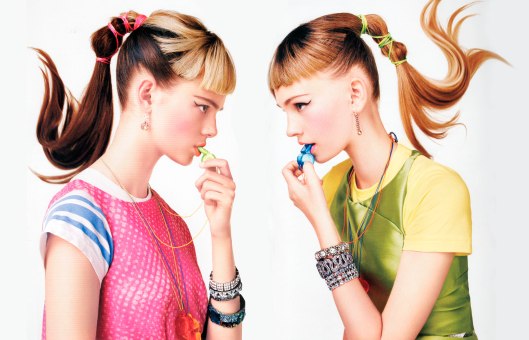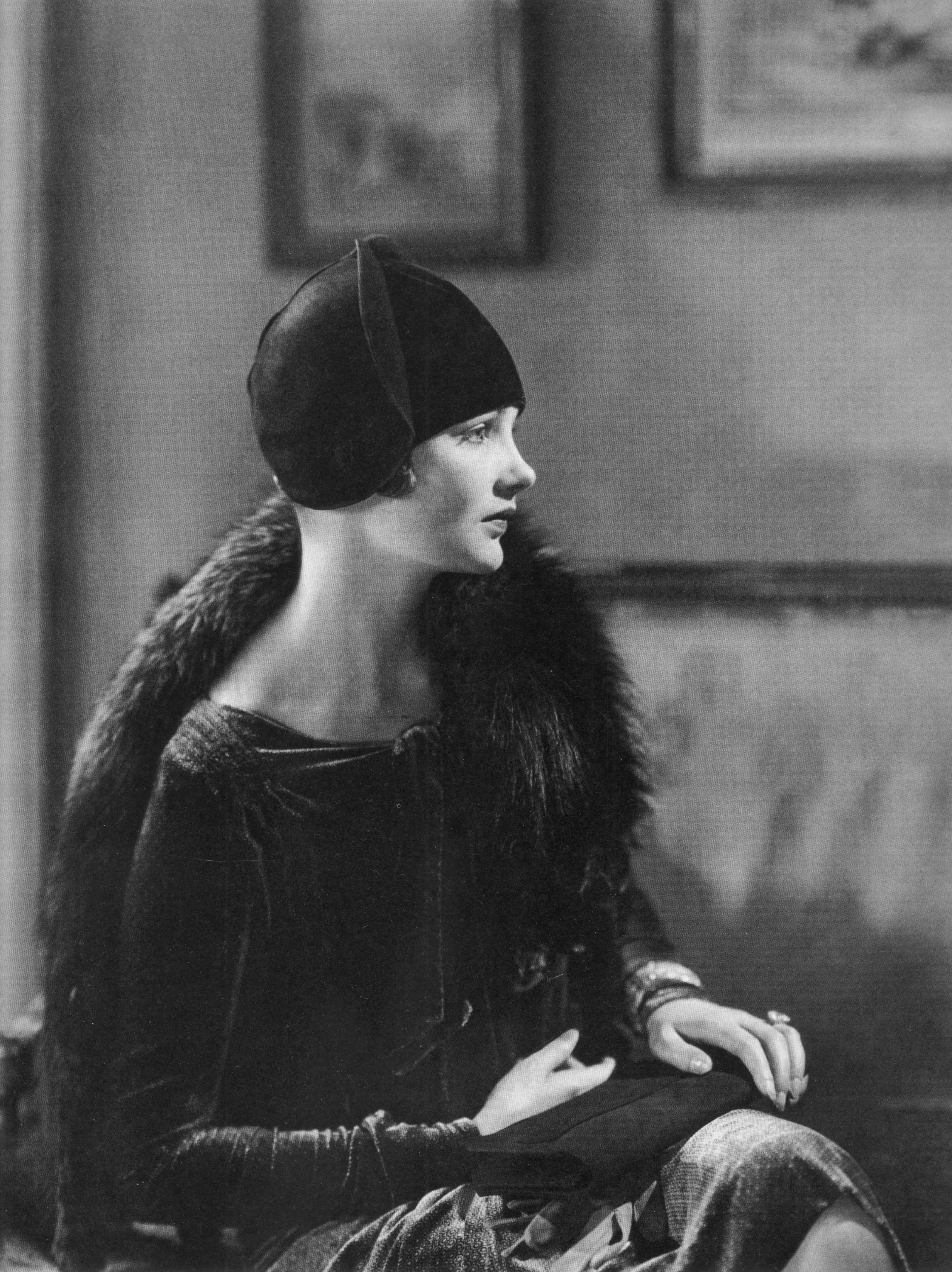(For English version please scroll down the page)
Dažās kultūrās joprojām pastāv uzskats, ka fotogrāfējot tiek nozagta iemūžinātā cilvēka dvēsele. Par šo apgalvojumu vienmēr gribējies pasmaidīt, jo modernajā sabiedrībā nereti sakām – fotogrāfija ar dvēseli. Tāpēc secinājums varētu būt, ka izcils fotogrāfs nenozog dvēseli, bet iemūžina tās atspulgu, kurš raudzīsies mums pretī tik ilgi, cik vien fotogrāfija pastāvēs.
Fotogrāfijas vizuālā valodā runā tikpat skaļi kā rakstīts teksts, liekot mums emocionāli reaģēt uz ieraudzīto, iemīlēt to vai riebumā novērsties. Un vai tad fotogrāfs neieliek savā darbā gabaliņu pats savas dvēseles – radošumu, mīlestību, prieku vai skumjas?
Modes fotogrāfijai īpaši tīk spēlēties ar mūsu emocijām. No glamūra un provokācijām, līdz pat detaļu perfekcijai un nepatveramam skaistumam. Tādu modes fotogrāfijas grandu kā Mario Testino, Patrika Demaršeljē, Helmuta Ņūtona, Solves Sundsbo darbi likuši pārsteigumā aizrauties elpai cilvēkiem visā pasaulē. Pāršķirstot žurnalu Vogue, W, Love lapaspuses, atliek vien sajūsmā noelsties par brīžiem prātam neaptveramo rezultātu. Vēsture ir pierādījusi – modes fotogrāfija ir mākslas veids, kas liek glancēto žurnālu drukas mašīnām strādāt aizvien intensīvāk.
Grāmata Coming Into Fashion. A Century Of Photography At Conde Nast aizved mūs modes fotogrāfijas vēstures ceļojumā. Sākot ar 20. gadsimta sākumu, kad barons Adolfs de Meijers (Adolf de Meyer) kļuva par pirmo oficiālo žurnāla Vogue fotogrāfu, 30to gadu beigām, kad par galveno uzdevumu kļūst apģērba izcelšana, 80to gadu supermodeļu kultu un 21. gadsimta tehnoloģisko revolūcijas laikmetu, kad realitāti fotogrāfijā iespējams sagrozīt līdz nepazīšanai. Fotogrāfijas vēsturniece Natālija Heršdorfere (Natalie Herschdorfer) veikusi bagātīgu izdevniecības Conde Nast arhīvu izpēti un izcēlusi ikoniskākos modes fotogrāfu darbus vairāk nekā simts gadu griezumā.
Šķirstot grāmatu un domājot par trīsvienību modele – apģērbs – vide, neviļus rodas pārdomas par fotogrāfa dilemmu. No vienas puses, radošā brīvība, taču no otras – žurnāla redakcijas uzstādījumi, formāta specifikācija, foto pēcapstrāde. Cik galarezultātā ir fotogrāfa “dvēsele” un cik – dažādu blakusfaktoru apkopojums? Tas laikam ir visgrūtāk atbildāmais jautājums par modes fotogrāfiju. Par to domājot, prātā nāk aina no dokumentālās filmas September Issue, kurā Vogue galvenā redaktore Anna Vintūra slavenajam fotogrāfam Mario Testino pārmet, kāpēc fotostailinga bildēs nav redzams solītais Kolizejs. Uz ko Mario pēcāk atbild: “Fotogrāfējot sapratu, ka tas neiederas kopējā noskaņā. Es neuzskatīju, ka mums tas nepieciešams.” Tātad arī tādā milzīgā korporācijā kā Conde Nast robežas ir stingras, taču fotogrāfs tomēr paliek sava darba diriģents.
Modes fotogrāfija ir spogulis, caur kuru ieraugām apģērbu, apavus un aksesuārus un tās spēkos ir ietekmēt, vai iemīlamies produktā un iekārojam to, vai arī vienaldzīgi paejam tam garām. Tieši tāpēc Conde Nast gadsimta garumā saviem izdevumiem piesaista labākos profesionāļus – galvenos redaktorus, radošos direktorus, māksliniekus un fotogrāfus. Sadarbība ar fotogrāfiem ilgst nevis dažus gadus, bet gadu desmitus, jo meistaru fotogrāfijas nevis vienkārši izceļ konkrētus apģērbus vai zīmolus, bet gan piedāvā veselu dzīvesstilu, kam piederēt.
Atšķiriet grāmatu un baudiet. 20to gadu augstākās sabiedrības dāmu melnbaltos portretus – tik izsmalcinātus un elegantus. Šķiet, atliks tikai pieskarties bildei, lai sajustu apģērba tekstūru – maigo samtu un mīksto kažokādu. 40to gadu pārliecinātās sievietes mainīgos sejas vaibstus un apģerbu, kurā iezogas praktiskuma notis. 70to gadu brīvības garu un drosmīgo ķermeņa atkailināšanu, 90to gadu realitātes eksploziju, kad fotogrāfi apzinati modeļus ieliek skarbos realitātes fonos.
Fotogrāfijās ar dvēseles atspulgu.
Izdevējs: Thames & Hudson. Latvijā grāmata pieejama Globuss grāmatnīcās.
(Un)Stolen souls
In some cultures there is still a belief that when taking a photograph the soul of the person captured, is stolen. This allegation has always seemed worth a smile because, in modern society, we frequently say – a photograph with soul. Thus the illation could be that an outstanding photographer doesn’t steal the soul but captures its reflection, which will look at us as long as the photo exists.
Photographs, in a visual language, speak as loud as written text, making us emotionally respond to the seen, to love it or turn away in disgust. And doesn’t a photographer put a piece of their own soul in their work – creativity, love, joy, or grief?
Fashion photography especially relishes playing with our emotion. From glamour and provocation, to a perfection of detail and inconceivable beauty. Artwork of such fashion world grandiosos as Mario Testino, Patrick Demarchelier, Helmut Newton, Solve Sundsbo have taken people’s breath away in surprise all over the world. Skimming the pages of magazines such as Vogue, W, Love, one can only gush over the, at times, incomprehensible result. History has proven – fashion photography is a type of art that makes the glossy magazine printing machines work ever so intensively.
The book Coming into Fashion. A Century of Photography at Conde Nast brings us on a trip through the history of fashion photography. Starting with the beginning of the 20th century, when Baron Adolf de Meyer became the first official photographer for Vogue magazine; the end of the 30ies, when the clothes standing out becomes the main objective; the supermodel cult of the 80ies; and the technology revolution era of the 21st century when reality in photography can be altered beyond recognition. The photograph historian Natalie Herschdorfer has carried out a profuse study of the Conde Nast publisher’s archives and singled out the most iconic fashion photographer works over more than a hundred year cut.
Leafing through the book and contemplating the Trinity: model – clothes – environment, involuntarily thoughts of the photographer’s dilemma come about. On the one hand creative freedom, on the other – requirements of the magazine’s editorial board, specification of the format, post-shoot work on the photographs. How much at the end is the “soul” of the photographer and how much – a compilation of a diverse set of side factors? This is probably the hardest question to answer about fashion photography. Thinking about it, a scene from the documentary “September Issue” comes to mind where Vogue editor-in-chief Anna Wintour reproaches famous photographer Mario Testino, about why there isn’t the promised Coliseum in fashion styling photos. To which Mario later answers: “When photographing I realized that it doesn’t fit in the overall atmosphere. I didn’t think it was necessary” So, also in such a huge corporation as Conde Nast, the borders are fixed and yet the photographer stays the conductor of their work.
Fashion photography is a mirror through which we see clothes, shoes, and accessories and it has the power to influence whether we fall in love with the product and desire it, or indifferently walk past it. That’s why, for a century, Conde Nast has attracted the best professionals for its issues – editors-in-chief, creative directors, artists, and photographers. Collaboration with photographers lasts not for a couple of years, but decades, because the photographs of the masters don’t simply display particular clothes or labels, but offer a whole lifestyle to belong to.
Open the book and enjoy. Black and white portraits of high society ladies of the 20ies – so sophisticated and elegant. It seems you only have to touch the picture to feel the fabric’s texture – tender velvet and soft fur. The fickle facial features of the confident women of the 40ies and clothes in which a sense of practicality slips in. The spirit of freedom of the 70ies and the daring denudation of the body, the reality explosion of the 90ies, when the photographers deliberately put models against the background of a harsh reality.
In photographs with a reflection of the soul.
Publisher: Thames & Hudson


